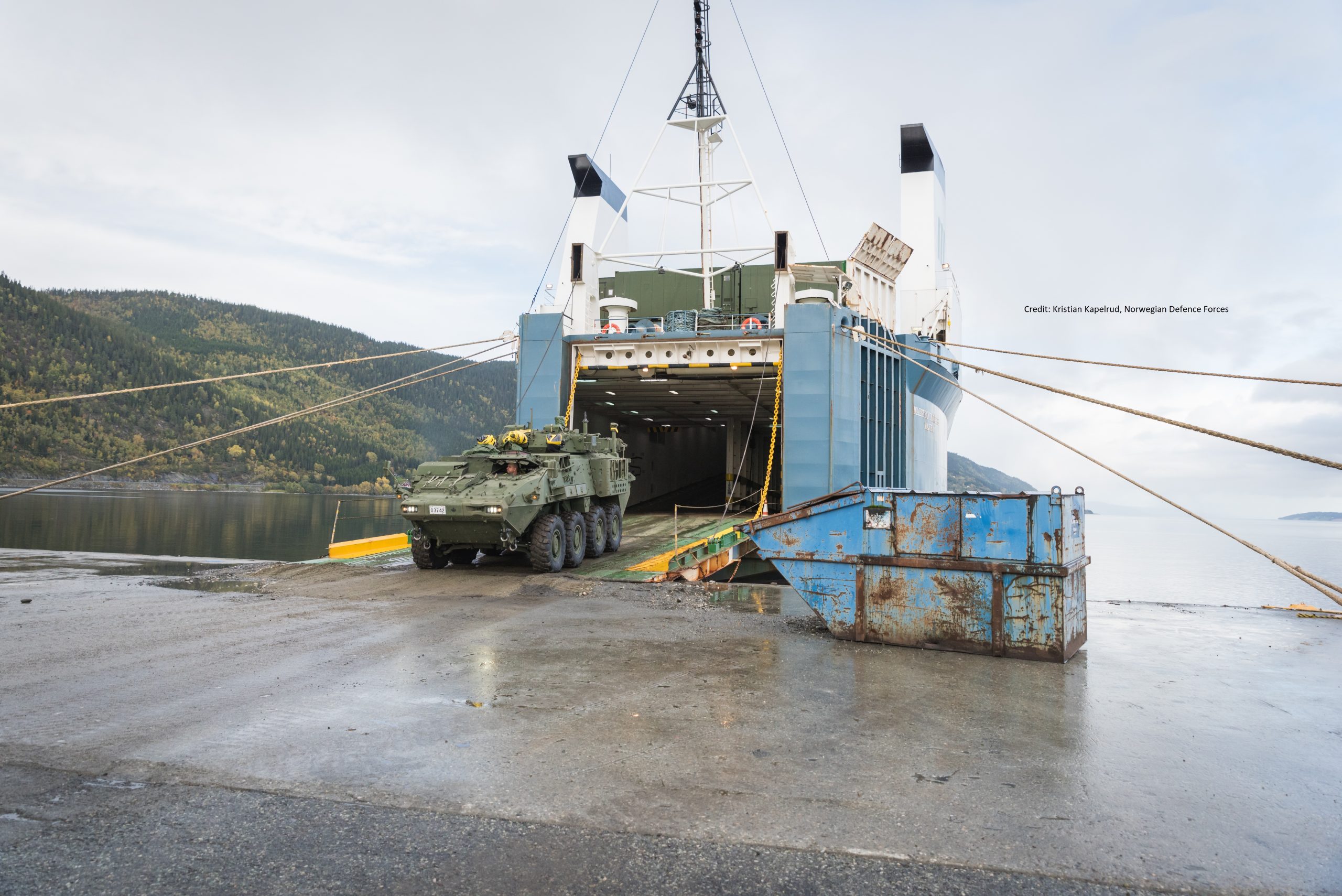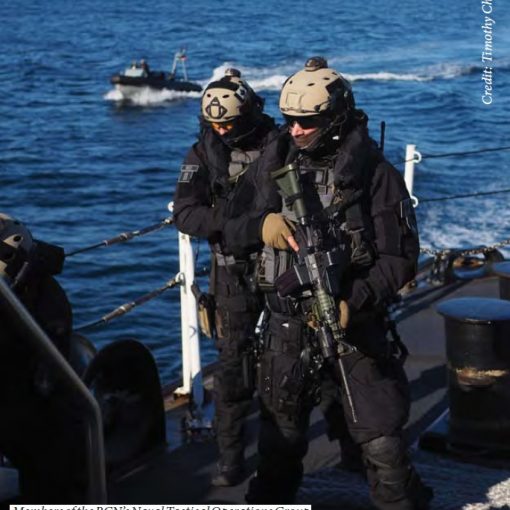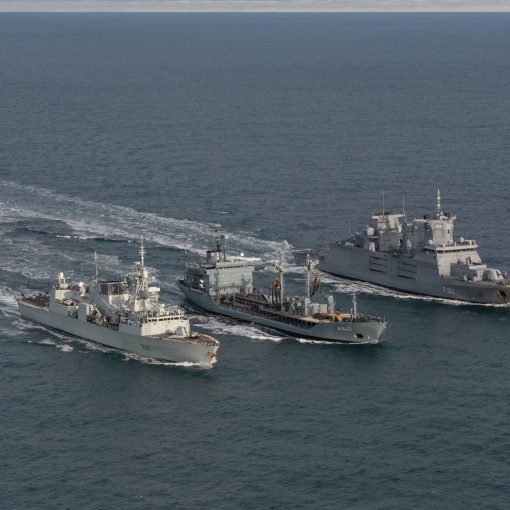By Vice-Admiral (Ret'd) Nigel Brodeur, 22 December 2021[1]
Note: This paper was written in 2010 but I am deeply concerned in 2021 that the government is continuing to disregard many serious and longstanding defence deficiencies, and thereby is weakening not only Canada’s ability to influence international affairs, but also weakening Canada’s ability to defend itself. Canadian Chiefs of Defence Staff have repeatedly stressed that forces equipped and trained for modern combat can readily be adapted to other less demanding national and peacekeeping roles, but that the converse does not hold true.
(An Abridged Version of) Comments on the 2001 Defence Policy Paper
Canadian perceptions following the demise of the Soviet Union were infused by a sense of relief that the threat to Canada – strategic nuclear warfare between the USSR and USA – had disappeared. However, given continuing instability in the Middle East, the rise of terrorism and the potential for the conflicts to spread, a demand that the ‘threat to Canada’ be identified as a prerequisite for justifying armed forces is specious. We live in a world where the ‘threat’ can change in less than 1/20th of the time that it takes Canada to procure a tank, aircraft or warship. We therefore cannot hope to reconfigure our forces for each new situation and must have multi-purpose forces capable of handling a variety of sudden and unforeseen contingencies.
NATO’s Transformation
Most Canadians believe that Canada contributes more to NATO than it receives. This is not true. In addition to the security benefits one expects from a cooperative defence alliance, there are many NATO activities to which Canada has contributed significantly for five decades and from which we have derived greater benefits than is commonly realized. These involve science and technology, training and, importantly, interoperability.
Canada’s brigades do not possess Division level and Corps level equipment such as heavy attack helicopters, long-range artillery, long-range surface-to-air missiles, and electronic warfare jammers. Yet, as Afghanistan has clearly shown, they must be capable of integrating with foreign forces which do possess those capabilities.
Canada’s navy gave up its cruisers and aircraft carrier years ago, and has no nuclear submarines, amphibious assault forces, or minesweeping helicopters, yet will inevitably find itself operating in close support of American or European navies which do possess such capabilities. Hence the RCN must know how they operate and how to work safely with them.
Canada’s air force does not own heavy bombers, heavy airlift, cruise missiles, or Airborne Early Warning aircraft, but must know how to operate in conjunction with them in some very congested and complex airspace situations.
Therefore, Canadian participation in NATO exercises and Standing Forces is vitally important for it prepares military units to work safely and effectively in joint operations with NATO (and non-NATO) forces, including multinational peacemaking/keeping, anti-piracy and humanitarian operations under the UN or other auspices.
Collective Security in the Pacific Rim
NATO may have the potential to provide Canada with a new opportunity vis-a-vis collective security in the Pacific Rim. This is a complex subject which should first be addressed in a Foreign Policy Review, but it should be noted that (under Chapter 5) NATO is no less obligated to respond if Canada or the United States are attacked via the Pacific than if they were to be attacked via the Atlantic. This fact tends to be overlooked by Europeans.
However, NATO did create a mechanism for Canada/United States defence cooperation in the Canada-US Regional Planning Group (CUSRPG). This group develops and recommends to the Military Committee plans for the defence of the Canada-US region. There is some linkage between the staffs involved in CUSRPG and those involved in the bilateral Canada-US Permanent Joint Board on Defence and its subordinate body, the Canada-US Military Cooperation Committee (MCC) which oversees bilateral CANUS defence planning. Additionally, there are several bilateral and multilateral military consultation groups involving Canada, the United States, the United Kingdom, Australia and New Zealand which work towards achieving military interoperability.
There also is a framework for joint CAN/US Pacific military exercises and for multinational exercises with Pacific Rim states – the RIMPAC series. But it is less developed than the NATO framework and participation by Asian states must be negotiated and conducted in accordance with their bilateral security arrangements with the United States. Additionally, joint tactical doctrine is sparse in comparison with the situation in NATO, with the result that NATO publications find their way into Pacific military exercises. The outreach cooperation in Europe between NATO and former Warsaw Pact states has its Pacific counterpart in the confidence-building initiatives taken among the United States, Canada, Australia, New Zealand, Russia, China, Japan and India.
NATO’s mechanisms have succeeded in giving Europe a regional security ‘umbrella’ under the larger United Nations umbrella. It may now be advisable to adapt such mechanisms to work towards a regional umbrella for the Pacific Rim. Alternatively it may be preferable to continue to depend totally on the United States and its various bilateral security arrangements with individual Pacific Rim states, but this may no longer be realistic, nor in Canada’s best interests.
Deployments of Canadian Military Forces
Unless Canada decides to withdraw into isolationism, decisions will have to be made as to the nature and size of force Canada is prepared to commit to NATO defence, to the UN, to other peacekeeping or peacemaking initiatives, and/or to some as yet undetermined regional security umbrella in the Pacific Rim.
Geography inevitably influences what Canada can do in international military situations. Naval task units can be deployed promptly, are slow to arrive, but are very flexible in situ; fighter squadrons take longer to plan and deploy, arrive speedily, have great firepower, but have limited flexibility for non-combat tasks; battalions and brigades take much longer to assemble, deploy and arrive, but are indispensable for occupying and controlling territory and protecting the populace. Therefore, geography and urgency, as well as the mission to be accomplished, will dictate what forces Canada can and should deploy on individual occasions. This reaffirms the need for multi-purpose forces.
The Cold War commitment of a Canadian Air-Sea Transportable (CAST) Brigade Group to reinforce north Norway in a time of tension, illustrates the pitfalls of making defence commitments without being prepared to handle all the military implications. That commitment was fraught with problems; some of which should have been evident for years. Thus,
• about 92% of the brigade’s material, including armoured vehicles, armament, helicopters and ammunition, could not be airlifted and had to go by sea in 4-5 RO-RO ships;
• There were no such ships serving under the Canadian flag; no mechanism to compel any Canadian owners to transfer such ships to the Canadian flag; and no mechanism which would enable those ships to be requisitioned and steamed to a port in time to enable them to load the material, cross the Atlantic and off-load in Norway, before hostilities would have commenced;
• CAST’s arrival in Norway depended on unhampered access to Norwegian port and airfield facilities which COMSTRIKFLTLANT would simultaneously be using for the much larger US Marine Amphibious Brigade and combined UK/Netherlands Amphibious Force. Furthermore, they would also be needed by the US Air Force for its reinforcement of Norway.
Given those circumstances it was probable that in a real life situation, the CAST shipping would come under attack before it could arrive in Norway. Also whatever CAST personnel and material did arrive, would have to rapidly form up and acclimatize in close proximity to the enemy’s frontlines. A force designed only for what is called an ‘administrative landing’ would almost inevitably be faced with an ‘opposed landing.’
Regardless of whether or not CAST could have overcome the obstacles, the fact remains that the complete CAST had not been exercised for years. Even then, it was not exercised in conjunction with the Strike Fleet forces - forces which deployed to Norway every two years in SACLANT’s regular series of exercises. Consequently it is not surprising that Canada’s NATO allies questioned the credibility of the Canadian government’s commitment to CAST.
This is not to say that Canada cannot and should not have the capability to commit brigade-level formations to foreign conflicts. That type and size of force may well be the minimum for autonomous operations in the face of a well-armed opposition, or the minimum contribution (to an international force) needed to ensure that Canada has an effective voice in the operation and its outcome. But such a capability does not come cheaply or easily, especially if its equipment must be pre-positioned or protected from attack en route to its destination.
Public Support for Defence
The Canadian public’s attitude towards the military is important because public support, or lack thereof, will ultimately determine the success or failure of Canadian defence policy.
Although recent terrorist actions and the ‘war on terrorism’ seem to have muted the anti-military movement in Canada, this may only be a temporary silence. It is important to recognize that a strong and vocal anti-military and unilateral disarmament movement has arisen in Canada since the late 1960s. Its success can be seen in the fact that its spokespersons have been quoted in almost every media story dealing with the military, regardless of whether they possess any relevant military qualifications or experience! We may applaud this as ‘democracy,’ however, when the best source of military information – the serving military – is unable to enter the public debate, and when the activists who oppose the military are free to undermine them (including by disinformation), there is a considerable danger that democracy is being turned against itself by being unwittingly used to undermine its own means of protection.
To illustrate the point - in September 1992 “Maclean’s” carried a full-page advertisement attacking the EH 101 helicopter program and soliciting funds for the Canadian Peace Alliance’s campaign opposing the EH 101. That advertisement was sponsored by some 50 organizations - including the Canadian Labour Congress - and by some 53 prominent individuals. At one stroke it both held out a carrot that any political party opposing the EH-101 could expect to be rewarded at the polls, and dropped names guaranteed to sway the media. The media never gave the naval helicopter experts in the military any real opportunity to influence public opinion on the EH-101. Consequently, and notwithstanding the endorsement of the EH-101 by the Standing Committee on National Defence and Veterans Affairs in its 1990 report, support for the EH-101 dwindled which in turn paved the way for the political decision to terminate the program.
Taken in isolation, the EH-101 cancellation might be no more than a politically practical (and perhaps financially essential) decision. However, taken in conjunction with the ‘rust-out’ continuing in the forces, the other cuts inflicted on defence over the past two decades, and the continuing erosion of Canadian military contributions to alliances, a disquieting trend emerges. The trend can be summarized as a policy of continued unilateral disarmament to enable transfers of defence funds to other sectors of government. This is extremely troubling for it signifies that the studies and conclusions of committees/review groups over the past 25 years have essentially become meaningless or have served only to provide government with excuses for procrastination.
When comprehensive apolitical reviews of defence issues occur, there must be an effective political and financial framework to translate their conclusions and recommendations into improvements in Canada’s military defence. It must be stressed that parliamentarians in a democracy have an obligation vis-a-vis their military. Unlike any other organization in Canada, the members of the armed forces are committed to do battle (and if necessary, give their lives) for Canada. They are also obligated to forego the freedom to speak publicly on defence policy or other political issues, and have no union movement to protect their interests. In return they have a right to insist that their parliamentarians will faithfully represent the needs and concerns of the military to the Canadian public, and that politicians will see to it that military matters are explained to the public by qualified and competent military professionals.
It is essential that the Parliamentary Defence Critics in all parties become critics for defence rather than just critics of defence. That distinction may seem superficial but there is a difference between a Defence Critic berating the government for sending forces in harm’s way and a Defence Critic challenging the government to ensure that those forces are suitably armed and that they and their families are properly supported.
Conclusion
Most Canadians do not seem to realize that military security is a prerequisite to being free to attend to other issues of national concern. The time when military capability is most needed is usually when it is least affordable; and conversely, when it is the most affordable it is the least likely to be wanted.
There will be a distinction therefore between what sort of military Canada needs and what sort of forces it can afford. When military requirements are being continually downscaled during lean times, the military capabilities that are needed never materialize when prosperous times return. This trend has become a cancer on the capabilities and morale of the Canadian Armed Forces and must be corrected!
[1] Prepared by the Defence Associations National Network Pacific Region society (DANNPAC).





One thought on “A Revisit of the 2001 Defence Policy Paper”
An excellent and most timely article by Vice-Admiral Nigel Brodeur! Sadly, it is apparent that the condition and state of our CAF is not much better than it was in 2001, not to mention 2010 when you last wrote about it!
Not meaning to be too simplistic about it, but when most of the emphasis during commentary about new systems procurements are focused on cost (not taking away from that importance), rather than on the importance of rebuilding of the CAF, it dulls the public into thinking of only a token military and moving towards a gradual and eventual full dis-armament. This is the complete antithesis of what our potential and real adversaries are or would ever consider. It becomes a complete dis-service to our allies in NATO and our alliance commitment with the US in NORAD. As noted in the article, public support for the military being well equipped is critical towards the success or failure of CAF defence policy.
This is most relevant in the Public Support for Defence section of the Brodeur article, particularly the issues surrounding the EH 101 helicopter program of the late 80’s, early 90’s. I particularly like the reference to Parliamentary Defence Critics, and how they should view their role as critics for defence, rather than just critics of defence. I would just add to that list, some military commentators who seem to take delight in constantly going after the cost of CAF procurements, at the expense of having a well-equipped and modern military.
Finally Vice-Admiral Brodeur, it is nice hearing from you again sir. The last time I recall was when as Weapons Officer, you popped into the Sonar Control Room (SCR) from time to time on HMCS Kootenay while I was on watch during the Cuban Missile Crisis, in October 1962. Bravo Zulu sir!